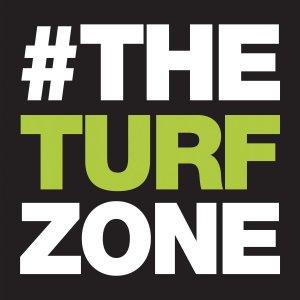The Turf Zone Podcast

Alabama Turfgrass Association – Building High Profile Turf Venues
Alabama Turf Times – Chad Lambert, Sur-Line Turf
When I was asked to write this article, I had some doubts as to my qualifications. I have been a contractor for over 30 years with no Ph.D. to give me the extra wealth of knowledge usually poured into such an article. However, I was asked to share my expertise, so here we go! I started working in the turfgrass industry not by accident, but by birth. My father, Louis “Skip” Lambert III, was a well-known agronomist, contractor and founder of Sur-Line Turf, Inc., in Northport, Alabama in 1991. Prior to this, Dad worked with Southern Turf Nurseries, and I can remember him talking about Prescription Athletic Turf (PAT) and Enka Turf Systems at an early age.
The PAT system had the ability to pump water into or out of the playing surface using pipes installed underneath the playing surface. The Orange Bowl in south Florida had this system installed due to the high rainfall they experience each year, especially during hurricanes. The University of Alabama’s Bryant Denny Stadium had its PAT system installed in 1991, and still has it in place. Enka Turf used synthetic mats to strengthen the playing surface and prevent cupping. Arkansas’ Razorback Stadium was recently renovated using a similar system.
These were high end athletic field systems installed in the 70’s, 80’s and 90’s at some of the most high-profile turf venues across the United States. I got to walk some special places going to work with Dad as a young boy, (Citrus Bowl, Orange Bowl, Atlanta Fulton County Stadium, Houston Astrodome, numerous Southeastern Conference venues, Augusta National Golf Club, and many more). Dad retired in 2006 and I’ve carried on in his footsteps.
High Profile Athletic Fields
All the venues mentioned previously are high-profile for sure. So, what defines a high-profile athletic field? The definition of a high-profile facility is determined by the money available for construction and maintenance. Qualified athletic contractors use the same equipment and personnel to build everything from little league to professional fields. The true difference lies in site design, materials, and maintenance, all of which cost money.
Sites are extremely important to athletic fields. They vary greatly and affect cost exponentially. Generally, the higher profile complexes can effectively change the landscape to fit their needs. Often high-profile facilities are in urban areas, where space becomes a huge factor.
Design is also an all-important factor and can make or break the facility. Architects and designers are challenged to create the perfect stage or playing surface. At times this stage must be incorporated within a stadium that allows fans good access and is a fun place to observe sporting events. Players and staff also require adequate facilities, and all this must mesh with field efficiency. This design team often uses more than one professional, with at least one that specializes in design of the playing surface specifically. The sports field designer is the person in charge of designing a stage that will accommodate whatever sport is to be played under varying conditions provided by Mother Nature. The exception is closed stadiums, which present new challenges.
Types of Playing Surfaces
Possible materials used to build high-profile athletic facility playing surfaces are determined by the specific design or type of field. With that said, there are three basic types of playing surfaces no matter the sport being played.
* Natural Grass
* Synthetic Turf
* Hybrid Systems (combines both natural and synthetic turf)
All of them have a place in modern athletic facilities.
Natural Grass
Natural grass fields are still considered the standard by which every other type of playing surface is compared. High-profile natural grass playing surfaces are durable and provide excellent playability when properly const...






 Visit Podcast Website
Visit Podcast Website RSS Podcast Feed
RSS Podcast Feed Subscribe
Subscribe
 Add to MyCast
Add to MyCast